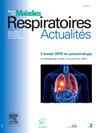Les tumeurs thymiques : traitements systémiques et place de la radiothérapie
Q4 Medicine
引用次数: 0
Abstract
Thymic epithelial tumors are rare malignancies, that may be aggressive and difficult to treat, with variable prognosis. The histopathological classification distinguishes two major tumor types: thymomas and thymic carcinomas. Autoimmune manifestations are observed in nearly one third of patients at diagnosis; myasthenia gravis is the most common, followed by pure red cell aplasia and hypogammaglobulinemia. The historical staging system is the Masaoka system, reviewed by Koga; the 9th TNM system is standard since 2025. Assessment of resectability is the first step in the treatment of a thymic tumour, even at an advanced stage; even in advanced cases, complete resection remains the most significant prognostic factor for patient survival. If complete resection seems possible from the outset, surgery is the first stage of treatment, possibly supplemented by postoperative radiotherapy. In the case of unresectable thymic tumours, a pre-therapeutic biopsy should be performed for diagnostic purposes. The treatment strategy is based on induction chemotherapy followed by surgical resection or irradiation. Patients who remain ineligible for focal treatment receive chemotherapy exclusively. More targeted therapies would appear to be of interest as a subsequent line of treatment, as would immunotherapy in the context of thymic carcinoma, although toxicity needs to be monitored very regularly. Following an INCa call for tenders in 2010, a national care network of expert centres for thymoma and thymic carcinoma was set up in 2012: the RYTHMIC network (Thymic Tumours and Cancer Network). This network provides answers to very specific diagnostic or therapeutic questions in the context of rare tumours, as well as collating information on treatment to help improve it in the future.
胸腺肿瘤:全身治疗和放射治疗的位置
胸腺上皮性肿瘤是一种罕见的恶性肿瘤,具有侵袭性,治疗困难,预后多变。组织病理学分类区分两种主要的肿瘤类型:胸腺瘤和胸腺癌。近三分之一的患者在诊断时有自身免疫表现;重症肌无力是最常见的,其次是纯红细胞发育不全和低丙种球蛋白血症。历史分期系统为古贺审定的正冈系统;自2025年起,第9个TNM系统成为标准。评估可切除性是胸腺肿瘤治疗的第一步,即使是在晚期;即使在晚期病例中,完全切除仍然是患者生存的最重要的预后因素。如果从一开始就认为完全切除是可能的,手术是治疗的第一阶段,可能辅以术后放疗。对于不能切除的胸腺肿瘤,应进行治疗前活检以进行诊断。治疗策略是基于诱导化疗后手术切除或照射。仍然不适合局部治疗的患者只能接受化疗。更有针对性的治疗似乎是一种后续治疗方法,就像胸腺癌的免疫治疗一样,尽管毒性需要非常定期地监测。继2010年INCa招标之后,2012年建立了一个胸腺瘤和胸腺癌专家中心国家护理网络:RYTHMIC网络(胸腺肿瘤和癌症网络)。该网络提供了在罕见肿瘤背景下非常具体的诊断或治疗问题的答案,并整理了有关治疗的信息,以帮助将来改进治疗。
本文章由计算机程序翻译,如有差异,请以英文原文为准。
求助全文
约1分钟内获得全文
求助全文
来源期刊

Revue des Maladies Respiratoires Actualites
Medicine-Pulmonary and Respiratory Medicine
CiteScore
0.10
自引率
0.00%
发文量
671
 求助内容:
求助内容: 应助结果提醒方式:
应助结果提醒方式:


